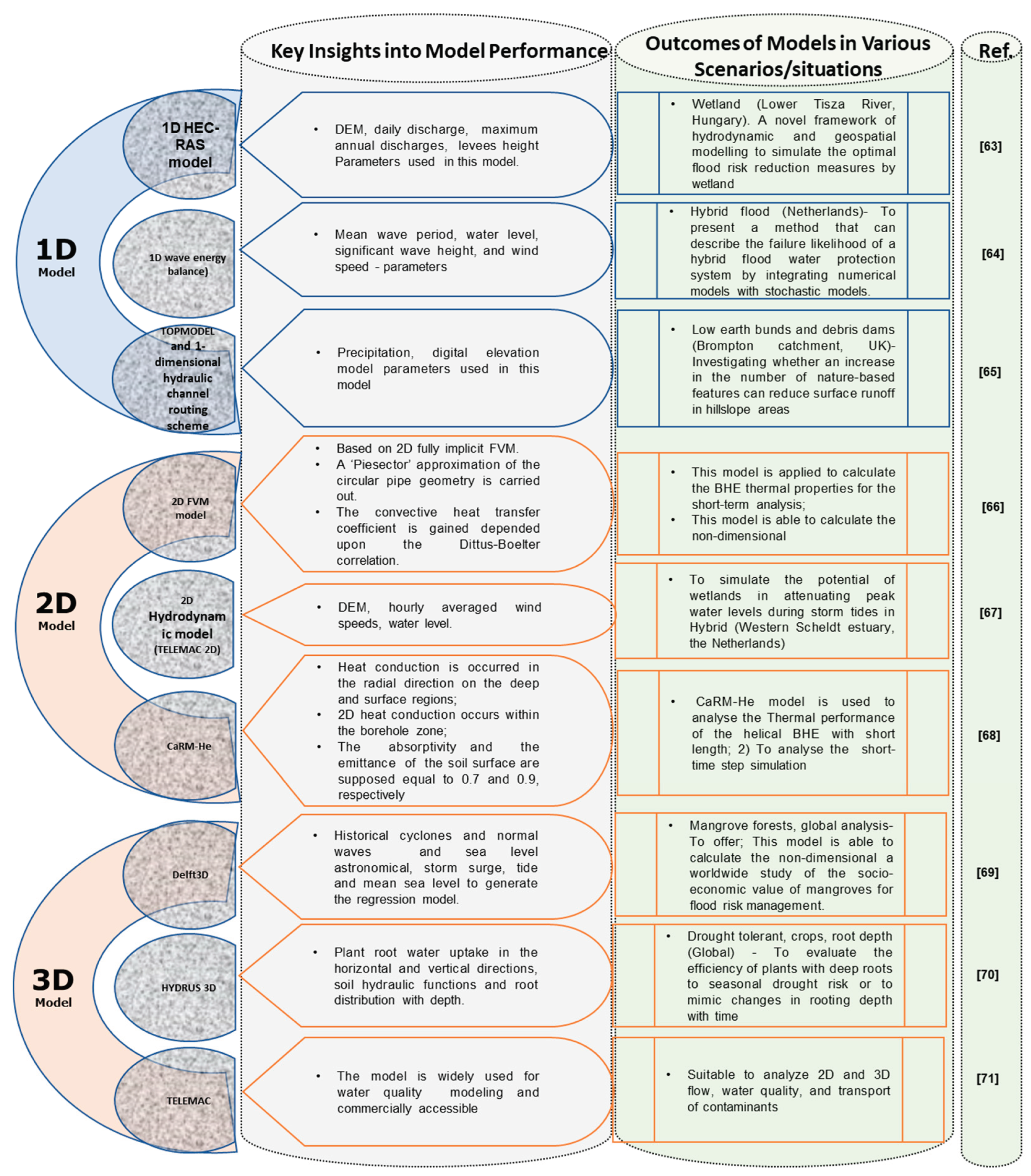Submitted:
16 February 2024
Posted:
19 February 2024
You are already at the latest version
Abstract
Keywords:
1. Background
2. Scope of groundwater numerical models (1D, 2D & 3D)
2.1. D Groundwater Numerical Models: Understanding Vertical Dynamics
2.2. D Groundwater Numerical Models: Assessing Horizontal Variations
2.3. D Groundwater Numerical Models: Comprehensive Representation
3. Basics of groundwater numerical models (1D, 2D & 3D)
4. Applications of groundwater numerical models (1D, 2D & 3D)
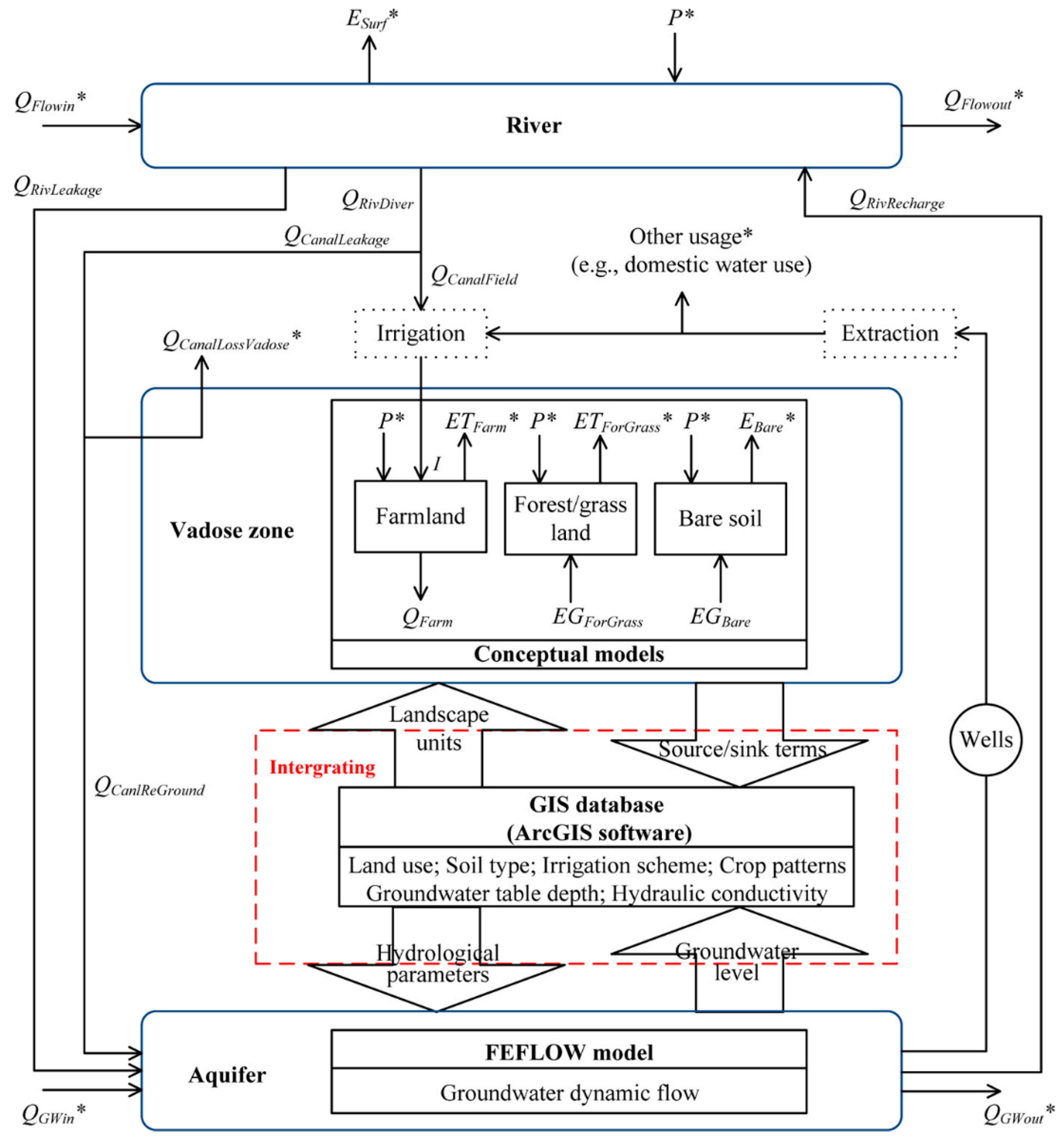
5. Comparative analysis: Advantages, Drawbacks and Solutions
| Scope | Advantages | Challenges | Assumptions | |
|---|---|---|---|---|
| 1D models |
|
|
|
|
| 2D models |
|
|
|
|
| 3D models |
|
|
|
|
7. Case Studies and Practical Implementations
7.1. Real-world Examples of 1D Model Applications
7.1.1. Flooding Model
7.1.2. One-dimensional modelling of aquifer contamination
7.2. Case Studies Highlighting 2D Model Successes
7.3. Three-Dimensional Modelling in Complex Hydrogeological Environments
7.3.1. Study of river-aquifer exchange fluxes 1D Versus 3D ground water
| Model used | Country | Specific site | Modelling Characteristics | Major findings | Reference |
|---|---|---|---|---|---|
| MODFLOW |
Central Mexico | Morelia–Queréndaro aquifer (AMQ) | springs, piezometric levels, natural terrain elevations, and groundwater extractions | Weighted recharge was obtained using the map of potential recharge zones | [58] |
| SEAWAT | India | Nagapattinam ,Tamil Nadu | Permeability (K) assignation, importing of observation well data for head, concentration, and discharge; and. parameters Cl and TDS at each observation well |
Fluctuation in TDS concentrations which was indicated by often a rise in TDS followed by a sharp drop | [59] |
| FEFLOW | Xinjiang, China |
The Sangong River watershed | Permeation coefficient, rate of groundwater recharge, bottom elevation of the water-barrier of phreatic aquifer and top elevation of the aquifer |
Models can be used to simulate the effects of regional vegetation change on the groundwater depth. | [60] |
| FEMWATER | Northern central Europe | Nysa Łużycka River, the north-western part of the waste soil bank and its surroundings |
Hydraulic conductivity ks, differential water capacity F(h), volume moisture content θ(h) and relative hydraulic conductivity kr(h) | Designing of dewatering system extending and monitoring system of potential threat of slope stability of the waste soil bank | [61] |
| SUTRA | Iran | East Azerbaijan province | The population size and the number of generations of the CACO optimization algorithm are adjusted based on the given stopping criteria | Used to assess the current and projected future status of groundwater resources | [62] |
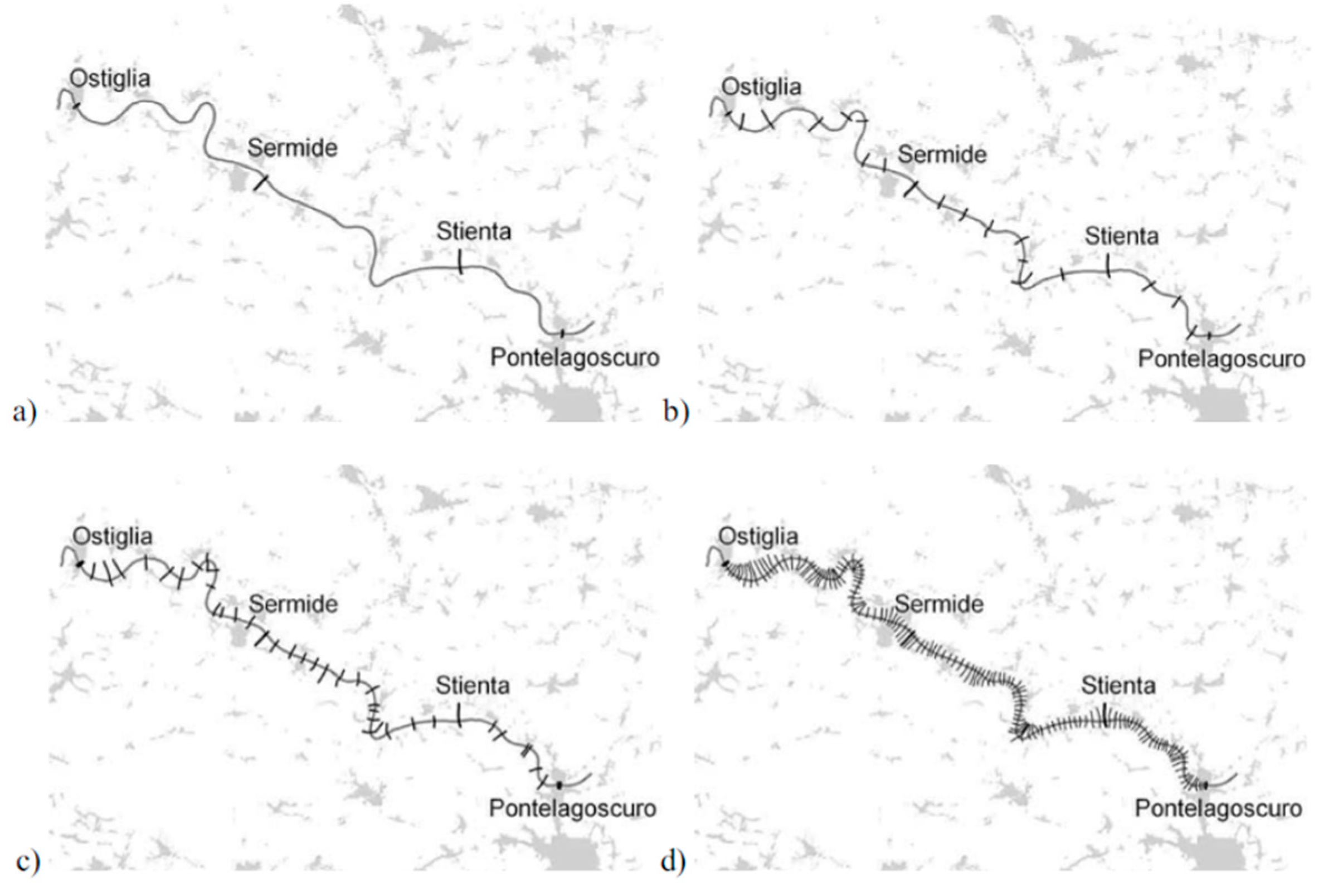

9. Future Directions and Innovations
10. Conclusion
Acknowledgement
References
- Sharan, A.; Datta, B.; Lal, A.; Kotra, K.K. Management of Saltwater Intrusion Using 3D Numerical Modelling: A First for Pacific Island Country of Vanuatu. Environ Monit Assess 2024, 196, 120. [CrossRef]
- Lal, A.; Datta, B. Performance Evaluation of Homogeneous and Heterogeneous Ensemble Models for Groundwater Salinity Predictions: A Regional-Scale Comparison Study. Water Air Soil Pollut 2020, 231, 1–21. [CrossRef]
- El-Rawy, M.; Batelaan, O.; Buis, K.; Anibas, C.; Mohammed, G.; Zijl, W.; Salem, A. Analytical and Numerical Groundwater Flow Solutions for the FEMME-Modeling Environment. Hydrology 2020, 7, 27. [CrossRef]
- Oosterbaan, R.J.; Boonstra, J.; Rao, K. The Energy Balance of Groundwater Flow. In Proceedings of the Subsurface-Water Hydrology: Proceedings of the International Conference on Hydrology and Water Resources, New Delhi, India, December 1993; Springer, 1996; pp. 153–160.
- Di Salvo, C. Groundwater Hydrological Model Simulation. Water (Switzerland) 2023, 15.
- Swain, S.; Taloor, A.K.; Dhal, L.; Sahoo, S.; Al-Ansari, N. Impact of Climate Change on Groundwater Hydrology: A Comprehensive Review and Current Status of the Indian Hydrogeology. Appl Water Sci 2022, 12. [CrossRef]
- Kumar, V.; Sharma, K.V.; Caloiero, T.; Mehta, D.J.; Singh, K. Comprehensive Overview of Flood Modeling Approaches: A Review of Recent Advances. Hydrology 2023, 10, 141. [CrossRef]
- Shah, T.; Molden, D.; Sakthivadivel, R.; Seckler, D. The Global Groundwater Situation: Overview of Opportunities and Challenges; 2000;
- Bhunia, G.S.; Chatterjee, U. Chapter 15 - Ground Water Depletion and Climate Change: Role of Geospatial Technology for a Mitigation Strategy. In Climate Change, Community Response and Resilience; Chatterjee, U., Shaw, R., Bhunia, G.S., Setiawati, M.D., Banerjee, S., Eds.; Elsevier, 2023; Vol. 6, pp. 291–304 ISBN 978-0-443-18707-0.
- Patle, G.T.; Singh, D.K.; Sarangi, A.; Sahoo, R.N. Modelling of Groundwater Recharge Potential from Irrigated Paddy Field under Changing Climate. Paddy and Water Environment 2017, 15, 413–423. [CrossRef]
- Nema, P.; Nema, S.; Roy, P. An Overview of Global Climate Changing in Current Scenario and Mitigation Action. Renewable and Sustainable Energy Reviews 2012, 16, 2329–2336.
- Li, R.; Merchant, J.W. Modeling Vulnerability of Groundwater to Pollution under Future Scenarios of Climate Change and Biofuels-Related Land Use Change: A Case Study in North Dakota, USA. Science of The Total Environment 2013, 447, 32–45. [CrossRef]
- Amanambu, A.C.; Obarein, O.A.; Mossa, J.; Li, L.; Ayeni, S.S.; Balogun, O.; Oyebamiji, A.; Ochege, F.U. Groundwater System and Climate Change: Present Status and Future Considerations. J Hydrol (Amst) 2020, 589. [CrossRef]
- Norouzi Khatiri, K.; Nematollahi, B.; Hafeziyeh, S.; Niksokhan, M.H.; Nikoo, M.R.; Al-Rawas, G. Groundwater Management and Allocation Models: A Review. Water (Basel) 2023, 15, 253. [CrossRef]
- Anderson, M.P.; Woessner, W.W.; Hunt, R.J. Applied Groundwater Modeling: Simulation of Flow and Advective Transport; Academic press, 2015; ISBN 0080916384.
- Das, S.; Eldho, T.I. Effectiveness of Meshless Methods for Advection Dominant Groundwater Contaminant Transport Problems. Eng Anal Bound Elem 2023, 157, 565–577. [CrossRef]
- Tootoonchi, F.; Todorović, A.; Grabs, T.; Teutschbein, C. Uni- and Multivariate Bias Adjustment of Climate Model Simulations in Nordic Catchments: Effects on Hydrological Signatures Relevant for Water Resources Management in a Changing Climate. J Hydrol (Amst) 2023, 623, 129807. [CrossRef]
- Valencia Cotera, R.; Guillaumot, L.; Sahu, R.-K.; Nam, C.; Lierhammer, L.; Máñez Costa, M. An Assessment of Water Management Measures for Climate Change Adaptation of Agriculture in Seewinkel. Science of The Total Environment 2023, 885, 163906. [CrossRef]
- Bear, J.; Beljin, M.S.; Ross, R.R. Ground Water Issue Fundamentals of Ground-Water Modeling; 1992;
- Lanni, C.; Mazzorana, B.; Macconi, P.; Bertagnolli, R. Suitability of Mono-and Two-Phase Modeling of Debris Flows for the Assessment of Granular Debris Flow Hazards: Insights from a Case Study. In Proceedings of the Engineering Geology for Society and Territory-Volume 2: Landslide Processes; Springer, 2015; pp. 537–543.
- Kalugin, A.S. The Impact of Climate Change on Surface, Subsurface, and Groundwater Flow: A Case Study of the Oka River (European Russia). Water Resources 2019, 46, S31–S39. [CrossRef]
- Mizyed, N. Climate Change Challenges to Groundwater Resources: Palestine as a Case Study. J Water Resour Prot 2018, 10, 215–229. [CrossRef]
- Rouhullah Ali, S.; Khan, J.N.; Pandey, Y.; Din Dar, M.U.; Shafi, M.; Hassan, I. Modeling the Impacts of Climate Change on Groundwater Resources: A Review.
- Zhang, B.; Zeng, F.; Wei, X.; Khan, U.; Zou, Y. Three-Dimensional Hierarchical Hydrogeological Static Modeling for Groundwater Resource Assessment: A Case Study in the Eastern Henan Plain, China. Water (Basel) 2022, 14, 1651. [CrossRef]
- Bear, J. Fundamentals of Ground-Water Modeling; Superfund Technology Support Center for Ground Water, Robert S. Kerr …, 1992;
- Bazari, S.; Akbarpour, A.; Zooghi, M.J. One-Dimensional Modeling of Aquifer Contamination Using a Meshless Method. Journal of Health sciences and Technology 2018, 2, 23–28. [CrossRef]
- Wood, W.W.; Imes, J.L. Dating of Holocene Ground-Water Recharge in Western Part of Abu Dhabi (United Arab Emirates): Constraints on Global Climate-Change Models. In Developments in Water Science; Alsharhan, A.S., Wood, W.W., Eds.; Elsevier, 2003; Vol. 50, pp. 379–385 ISBN 0167-5648.
- Zhu, K.; Cheng, Y.; Zhou, Q.; Kápolnai, Z.; Dávid, L.D. The Contributions of Climate and Land Use/Cover Changes to Water Yield Services Considering Geographic Scale. Heliyon 2023, 9, e20115. [CrossRef]
- Ejaz, F.; Guthke, A.; Wöhling, T.; Nowak, W. Comprehensive Uncertainty Analysis for Surface Water and Groundwater Projections under Climate Change Based on a Lumped Geo-Hydrological Model. J Hydrol (Amst) 2023, 626, 130323. [CrossRef]
- Wu, Q.; Wang, G.; Zhang, W.; Cui, H.; Zhang, W. Estimation of Groundwater Recharge Using Tracers and Numerical Modeling in the North China Plain. Water (Basel) 2016, 8, 353. [CrossRef]
- Sarma, R.; Singh, S.K. Simulating Contaminant Transport in Unsaturated and Saturated Groundwater Zones. Water Environment Research 2021, 93, 1496–1509. [CrossRef]
- Li, J.; Mao, X.; Li, M. Modeling Hydrological Processes in Oasis of Heihe River Basin by Landscape Unit-Based Conceptual Models Integrated with FEFLOW and GIS. Agric Water Manag 2017, 179, 338–351. [CrossRef]
- Sharan, A.; Lal, A.; Datta, B. Evaluating the Impacts of Climate Change and Water Over-Abstraction on Groundwater Resources in Pacific Island Country of Tonga. Groundw Sustain Dev 2023, 20, 100890. [CrossRef]
- Xu, X.; Kalhoro, S.A.; Chen, W.; Raza, S. The Evaluation/Application of Hydrus-2D Model for Simulating Macro-Pores Flow in Loess Soil. International Soil and Water Conservation Research 2017, 5, 196–201. [CrossRef]
- Mekala, C.; Nambi, I.M. Understanding the Hydrologic Control of N Cycle: Effect of Water Filled Pore Space on Heterotrophic Nitrification, Denitrification and Dissimilatory Nitrate Reduction to Ammonium Mechanisms in Unsaturated Soils. J Contam Hydrol 2017, 202, 11–22. [CrossRef]
- Wu, M.; Wu, J.; Liu, J.; Wu, J.; Zheng, C. Effect of Groundwater Quality on Sustainability of Groundwater Resource: A Case Study in the North China Plain. J Contam Hydrol 2015, 179, 132–147. [CrossRef]
- Ghasemizadeh, R.; Yu, X.; Butscher, C.; Hellweger, F.; Padilla, I.; Alshawabkeh, A. Equivalent Porous Media (EPM) Simulation of Groundwater Hydraulics and Contaminant Transport in Karst Aquifers. PLoS One 2015, 10, e0138954. [CrossRef]
- Jia, H.; Liang, S.; Zhang, Y. Assessing the Impact on Groundwater Safety of Inter-Basin Water Transfer Using a Coupled Modeling Approach. Front Environ Sci Eng 2015, 9, 84–95. [CrossRef]
- Zhang, J.; Zhang, M.; Song, Y.; Lai, Y. Hydrological Simulation of the Jialing River Basin Using the MIKE SHE Model in Changing Climate. Journal of Water and Climate Change 2021, 12, 2495–2514. [CrossRef]
- Fouad, M.; Hussein, E.E.; Jirka, B. Assessment of Numerical Groundwater Models. Int J Sci Eng Res 2018, 9, 951–974.
- Bedi, S.; Samal, A.; Ray, C.; Snow, D. Comparative Evaluation of Machine Learning Models for Groundwater Quality Assessment. Environ Monit Assess 2020, 192, 1–23. [CrossRef]
- Tsakiris, G.; Alexakis, D. Karstic Spring Water Quality: The Effect of Groundwater Abstraction from the Recharge Area. Desalination Water Treat 2014, 52, 2494–2501. [CrossRef]
- Ejigu, M.T. Overview of Water Quality Modeling. Cogent Eng 2021, 8, 1891711. [CrossRef]
- Whitehead, P.G.; Leckie, H.; Rankinen, K.; Butterfield, D.; Futter, M.N.; Bussi, G. An INCA Model for Pathogens in Rivers and Catchments: Model Structure, Sensitivity Analysis and Application to the River Thames Catchment, UK. Science of the Total Environment 2016, 572, 1601–1610. [CrossRef]
- Burigato Costa, C.M. da S.; da Silva Marques, L.; Almeida, A.K.; Leite, I.R.; de Almeida, I.K. Applicability of Water Quality Models around the World—a Review. Environmental Science and Pollution Research 2019, 26, 36141–36162. [CrossRef]
- Condon, L.E.; Kollet, S.; Bierkens, M.F.P.; Fogg, G.E.; Maxwell, R.M.; Hill, M.C.; Fransen, H.H.; Verhoef, A.; Van Loon, A.F.; Sulis, M. Global Groundwater Modeling and Monitoring: Opportunities and Challenges. Water Resour Res 2021, 57, e2020WR029500. [CrossRef]
- Chapra, S.C.; Dolan, D.M.; Dove, A. Mass-Balance Modeling Framework for Simulating and Managing Long-Term Water Quality for the Lower Great Lakes. J Great Lakes Res 2016, 42, 1166–1173. [CrossRef]
- Olowe, K.O. Assessment of Some Existing Water Quality Models. Nature Environment & Pollution Technology 2018, 17.
- Anees, M.T.; Abdullah, K.; Nordin, M.N.M.; Ab Rahman, N.N.N.; Syakir, M.I.; Kadir, M.O.A. One-and Two-Dimensional Hydrological Modelling and Their Uncertainties. Flood Risk Manag 2017, 11, 221–244.
- Anees, M.T.; Abdullah, K.; Nawawi, M.N.M.; Ab Rahman, N.N.N.; Piah, A.R.M.; Zakaria, N.A.; Syakir, M.I.; Omar, A.K.M. Numerical Modeling Techniques for Flood Analysis. Journal of African Earth Sciences 2016, 124, 478–486. [CrossRef]
- Castellarin, A.; Di Baldassarre, G.; Bates, P.D.; Brath, A. Optimal Cross-Sectional Spacing in Preissmann Scheme 1D Hydrodynamic Models. Journal of Hydraulic Engineering 2009, 135, 96–105.
- Das, S.; Eldho, T.I. Simulation of Reactive Transport in Porous Media Using Meshless Local Petrov Galerkin (MLPG) and Combination of Meshless Weak and Strong (MWS) Form Methods. J Contam Hydrol 2022, 251, 104104. [CrossRef]
- Syarifudin, A.; Satyanaga, A.; Destania, H.R. Application of the HEC-RAS Program in the Simulation of the Streamflow Hydrograph for Air Lakitan Watershed. Water (Basel) 2022, 14, 4094. [CrossRef]
- Conant Jr, B.; Robinson, C.E.; Hinton, M.J.; Russell, H.A.J. A Framework for Conceptualizing Groundwater-Surface Water Interactions and Identifying Potential Impacts on Water Quality, Water Quantity, and Ecosystems. J Hydrol (Amst) 2019, 574, 609–627.
- Kalbus, E.; Reinstorf, F.; Schirmer, M. Measuring Methods for Groundwater, Surface Water and Their Interactions: A Review. Hydrology and Earth System Sciences Discussions 2006, 3, 1809–1850.
- Ghysels, G.; Anibas, C.; Awol, H.; Tolche, A.D.; Schneidewind, U.; Huysmans, M. The Significance of Vertical and Lateral Groundwater–Surface Water Exchange Fluxes in Riverbeds and Riverbanks: Comparing 1D Analytical Flux Estimates with 3D Groundwater Modelling. Water (Basel) 2021, 13, 306. [CrossRef]
- Refsgaard, J.C.; Højberg, A.L.; Møller, I.; Hansen, M.; Søndergaard, V. Groundwater Modeling in Integrated Water Resources Management—Visions for 2020. Groundwater 2010, 48, 633–648. [CrossRef]
- Navarro-Farfán, M. del M.; García-Romero, L.; Martínez-Cinco, M.A.; Hernández-Hernández, M.A.; Sánchez-Quispe, S.T. Comparison between MODFLOW Groundwater Modeling with Traditional and Distributed Recharge. Hydrology 2024, 11, 9. [CrossRef]
- Gopinath, S.; Srinivasamoorthy, K.; Saravanan, K.; Suma, C.S.; Prakash, R.; Senthilnathan, D.; Chandrasekaran, N.; Srinivas, Y.; Sarma, V.S. Modeling Saline Water Intrusion in Nagapattinam Coastal Aquifers, Tamilnadu, India. Model Earth Syst Environ 2016, 2, 1–10. [CrossRef]
- Zhao, C.; Wang, Y.; Chen, X.I.; Li, B. Simulation of the Effects of Groundwater Level on Vegetation Change by Combining FEFLOW Software. Ecol Modell 2005, 187, 341–351. [CrossRef]
- Wienclaw, E.; Koda, E.; Marek, Z.; Kaczarewski, T. FEMWATER Flow Model of Waste Soil Bank from Lignite Open Pit Mine. Annals of Warsaw University of Life Sciences-SGGW. Land Reclamation 2007, 151–158. [CrossRef]
- Mostafaei-Avandari, M.; Ketabchi, H.; Shaker-Soureh, F. Managerial Sustainability Indices for Improving the Coastal Groundwater Decisions by a Parallel Simulation–Optimization Model. Environ Monit Assess 2023, 195, 100. [CrossRef]
- Yavuzturk, C.; Spitler, J.D. A Short Time Step Response Factor Model for Vertical Ground Loop Heat Exchangers. ASHRAE Trans 1999, 105, 475–485.
- Stark, J.; Plancke, Y.; Ides, S.; Meire, P.; Temmerman, S. Coastal Flood Protection by a Combined Nature-Based and Engineering Approach: Modeling the Effects of Marsh Geometry and Surrounding Dikes. Estuar Coast Shelf Sci 2016, 175, 34–45. [CrossRef]
- Zarrella, A.; De Carli, M. Heat Transfer Analysis of Short Helical Borehole Heat Exchangers. Appl Energy 2013, 102, 1477–1491.
- Guida, R.J.; Swanson, T.L.; Remo, J.W.F.; Kiss, T. Strategic Floodplain Reconnection for the Lower Tisza River, Hungary: Opportunities for Flood-Height Reduction and Floodplain-Wetland Reconnection. J Hydrol (Amst) 2015, 521, 274–285. [CrossRef]
- Vuik, V.; Van Vuren, S.; Borsje, B.W.; van Wesenbeeck, B.K.; Jonkman, S.N. Assessing Safety of Nature-Based Flood Defenses: Dealing with Extremes and Uncertainties. Coastal engineering 2018, 139, 47–64. [CrossRef]
- Metcalfe, P.; Beven, K.; Hankin, B.; Lamb, R. A Modelling Framework for Evaluation of the Hydrological Impacts of Nature-based Approaches to Flood Risk Management, with Application to In-channel Interventions across a 29-km2 Scale Catchment in the United Kingdom. Hydrol Process 2017, 31, 1734–1748.
- Menéndez, P.; Losada, I.J.; Torres-Ortega, S.; Narayan, S.; Beck, M.W. The Global Flood Protection Benefits of Mangroves. Sci Rep 2020, 10, 1–11. [CrossRef]
- Ghazouani, H.; Rallo, G.; Mguidiche, A.; Latrech, B.; Douh, B.; Boujelben, A.; Provenzano, G. Assessing Hydrus-2D Model to Investigate the Effects of Different on-Farm Irrigation Strategies on Potato Crop under Subsurface Drip Irrigation. Water (Basel) 2019, 11, 540. [CrossRef]
- Ziemińska-Stolarska, A.; Skrzypski, J. Review of Mathematical Models of Water Quality. Ecological Chemistry and Engineering S 2012, 19, 197–211. [CrossRef]
- of Groundwater in the World Water Quality Alliance, F. ASSESSING GROUNDWATER QUALITY: A GLOBAL PERSPECTIVE Importance, Methods and Potential Data Sources Friends of Groundwater in the World Water Quality Alliance (WWQA);
- Wu, W.Y.; Lo, M.H.; Wada, Y.; Famiglietti, J.S.; Reager, J.T.; Yeh, P.J.F.; Ducharne, A.; Yang, Z.L. Divergent Effects of Climate Change on Future Groundwater Availability in Key Mid-Latitude Aquifers. Nat Commun 2020, 11. [CrossRef]
- Arboleda Obando, P.F.; Ducharne, A.; Cheruy, F.; Jost, A.; Ghattas, J.; Colin, J.; Nous, C. Influence of Hillslope Flow on Hydroclimatic Evolution under Climate Change. Earths Future 2022, 10, e2021EF002613. [CrossRef]
- Dembélé, M.; Salvadore, E.; Zwart, S.; Ceperley, N.; Mariéthoz, G.; Schaefli, B. Water Accounting under Climate Change in the Transboundary Volta River Basin with a Spatially Calibrated Hydrological Model. J Hydrol (Amst) 2023, 626, 130092. [CrossRef]
- Lal, A.; Naidu, R.; Datta, B. Applications of Machine Learning Models for Solving Complex Groundwater Modelling, Monitoring and Management Problems. In Groundwater in Arid and Semi-Arid Areas: Monitoring, Assessment, Modelling, and Management; Springer, 2023; pp. 177–196.
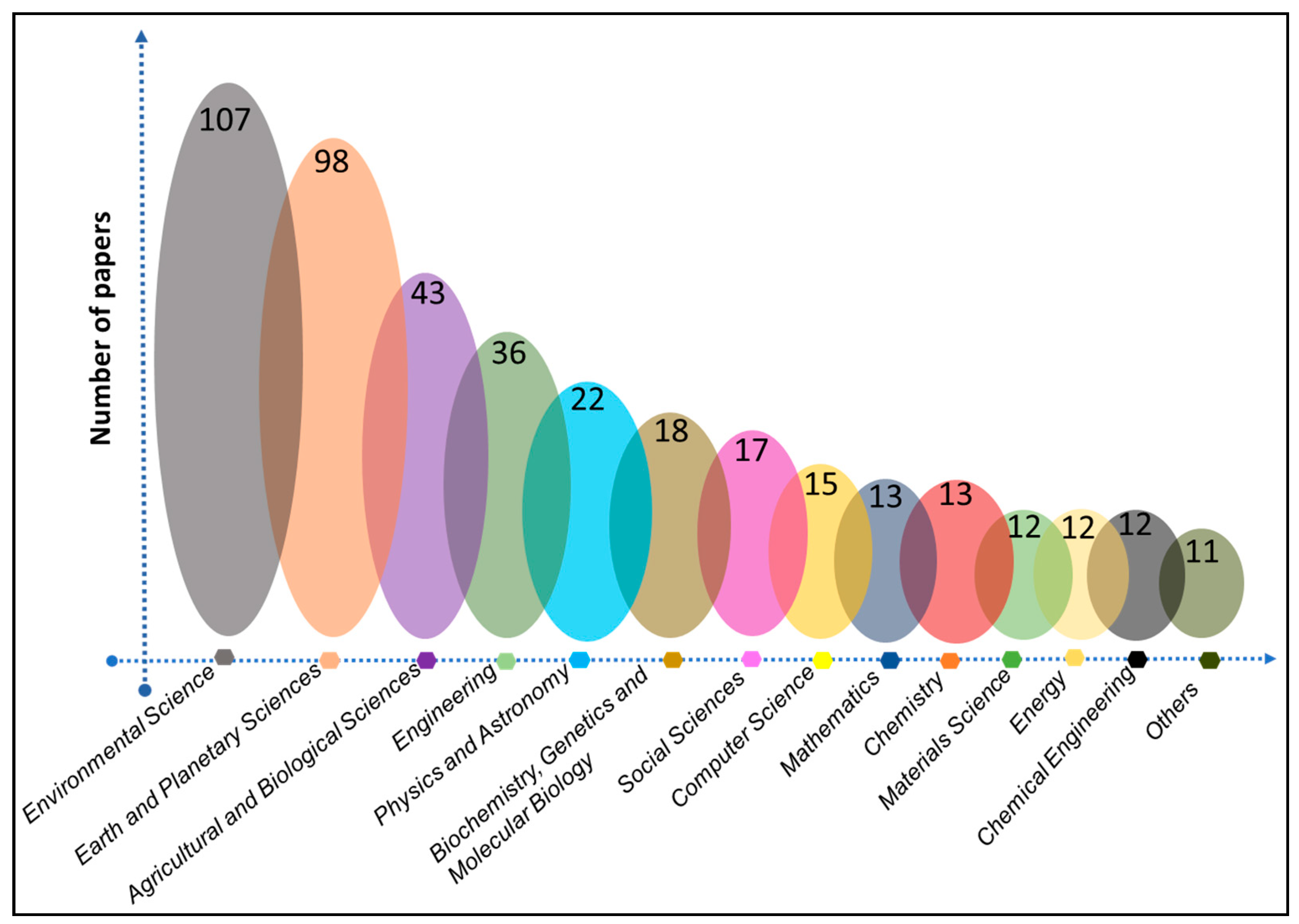
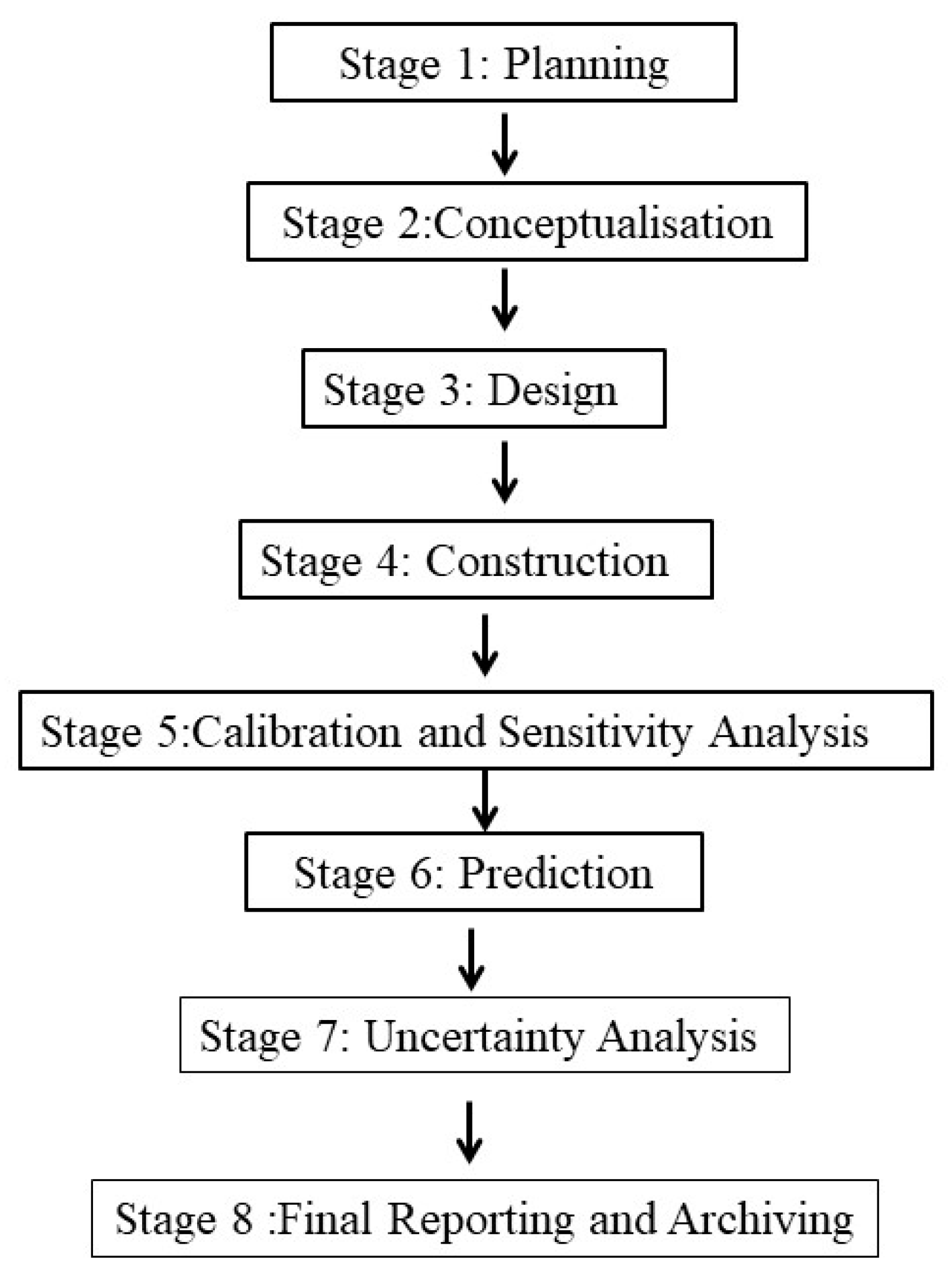
Disclaimer/Publisher’s Note: The statements, opinions and data contained in all publications are solely those of the individual author(s) and contributor(s) and not of MDPI and/or the editor(s). MDPI and/or the editor(s) disclaim responsibility for any injury to people or property resulting from any ideas, methods, instructions or products referred to in the content. |
© 2024 by the authors. Licensee MDPI, Basel, Switzerland. This article is an open access article distributed under the terms and conditions of the Creative Commons Attribution (CC BY) license (http://creativecommons.org/licenses/by/4.0/).


